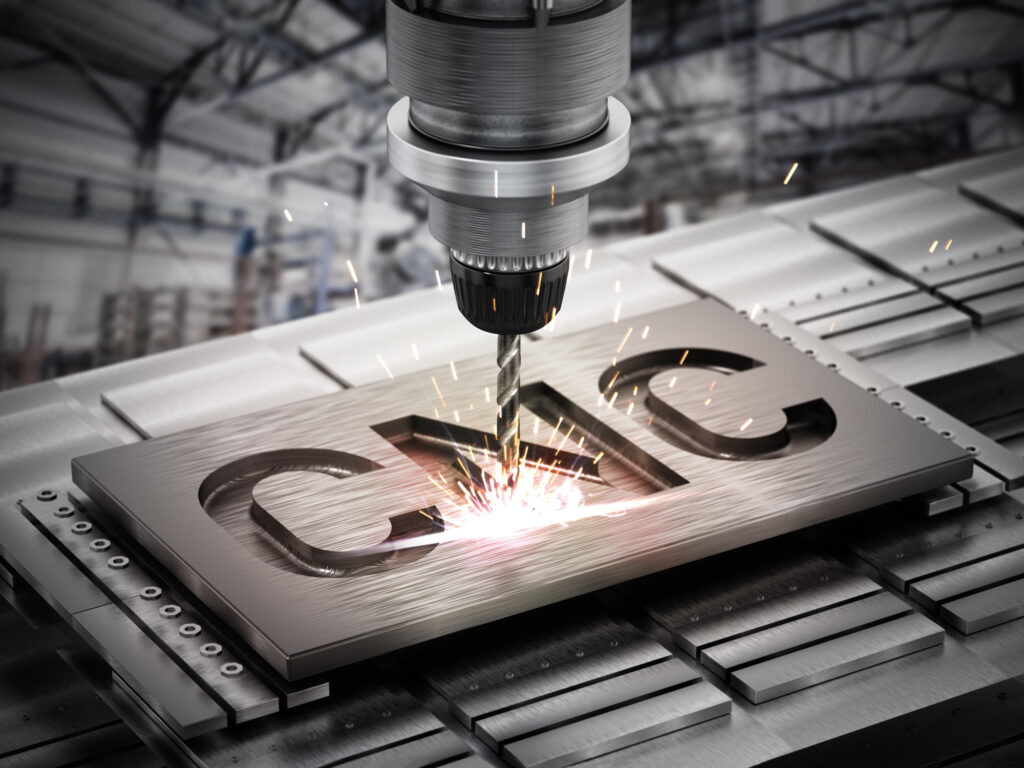CNC machines produce parts by milling solid pieces of material with precise, computer-controlled movements. CNC’s can come in two to five-axis varieties and as stand-alone machines, or they can be made to retrofit manually controlled milling machines.

So, what does CNC stand for, and how does it work?
To start, CNC stands for Computerized Numerical Control and, consequently, CNC machining works by inputting commands into a CNC software or loading up a 3d model and then asking the computer to reinterpret those commands and models into vectors that it can mill on.
Read to learn more about how the CNC machine is controlled.
How Your CNC Interprets Its Programming
No matter the type of CNC you have, they usually have two methods of interpreting your program’s instructions – G Code and conversational.
G-code is created manually by the user on CAD software, where they model out precisely how they want the completed piece to look. Afterward, the user is responsible for programming in the exact tool paths that the machine will follow. Retrofit and less expensive machines usually use this method.
Conversational operation is a little different. A conversational CNC machine will have a computer attached directly to the device for the user to use to design their CAM model and tool paths. The computer then uses logic to guess at the best paths for it to follow. Stand-alone machines usually use this method.
CNC Milling Like a G: Using G-Code
Conversational CNC machining is specific to each manufacturer and is essentially a partially automated G-code process, so for this explanation, we’ll focus on G-code programming.
First, you’ll need to create a 3D model of your final part with engineering-focused CAD software like Rhino 3D or Autodesk Fusion 360.
Next, you’ll either need to use the CAM software in your CAD program or port your 3D model into a stand-alone CAM software to start making your tool paths. During this process, try to guess how your material will react to different forces. I.e. wood will singe, or cloth might tear or bend (yes, cloth, go here for more info).
There are many different options for the tool paths, speeds, cut depth, feed rates, etc. you can use, so give yourself time to explore and experiment. You’ll inevitably mess up a couple of milling jobs during your learning process.
Make sure to triple-check your tool paths in the CAM software by running a milling simulation.
Finally, export your CAM toolpath model through your post-processor to create your G-Code! Look on your manufacturer or CAM modeler’s website to find the right post-processor for your machine. You can also search for terms like “what is CNC to CAM post-processing software for my (insert CNC and CAM software here).”
Loading Your Code
Now you can load your G- code. Most CNC’s will accept a micro sd card or USB dongle with the G-code installed.
Once your code is in the system, check the readout on your CNC, and you’re good to go. Remember that your first attempt will probably fail, so give yourself plenty of time to experiment.
Enjoy the Fruits of Your Labor
Even if you were only asking, “what is a CNC machine?” at the start of this article, we hope that you’ve been inspired to check out the wonderful world of CNC machining for yourself.
If you’re a curious mind, you might also want to check out the rest of our website; we don’t just cover CNC machines. We are the #1 place on the internet for lifestyle, business, and informative articles. Read more now!
Leave a Reply